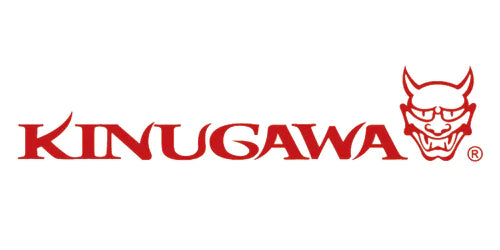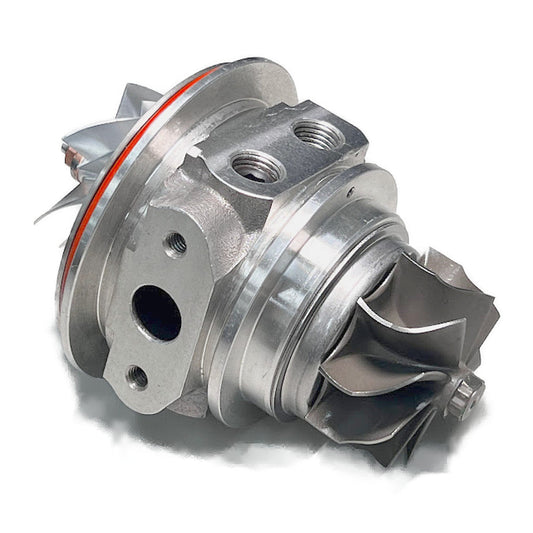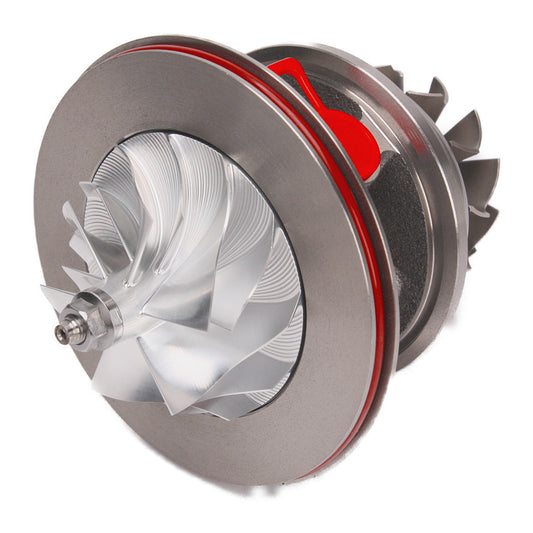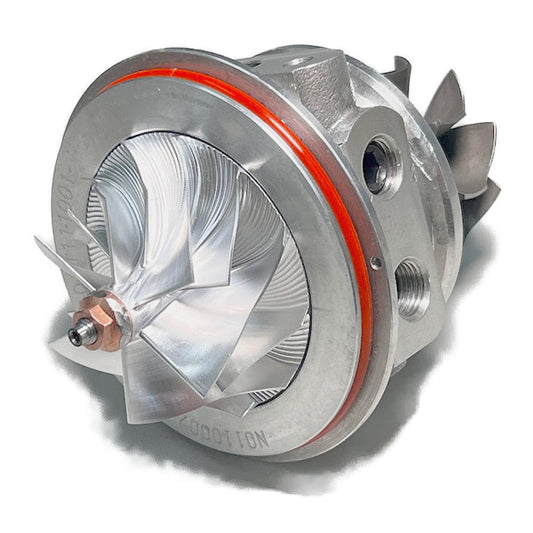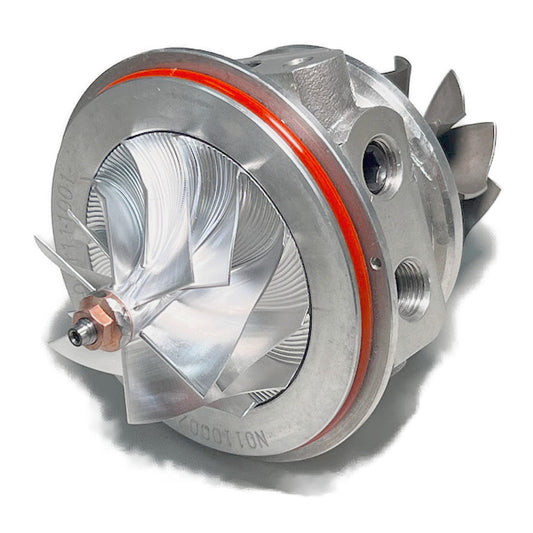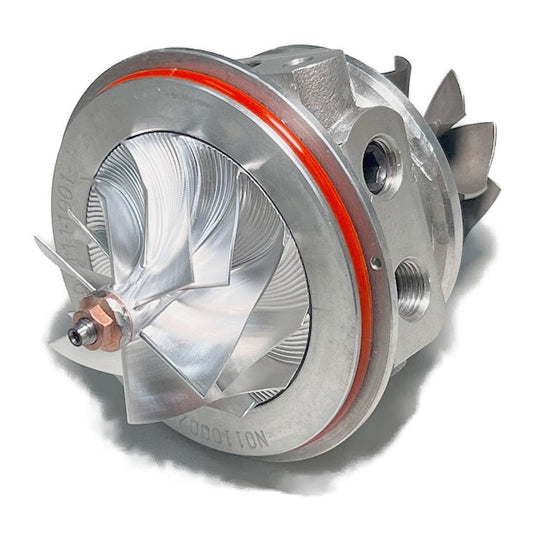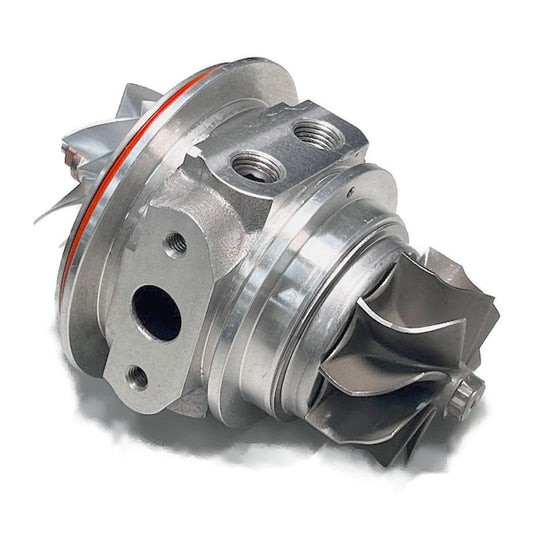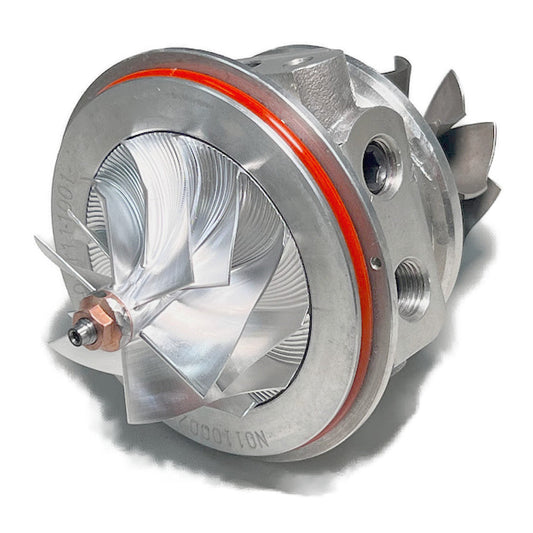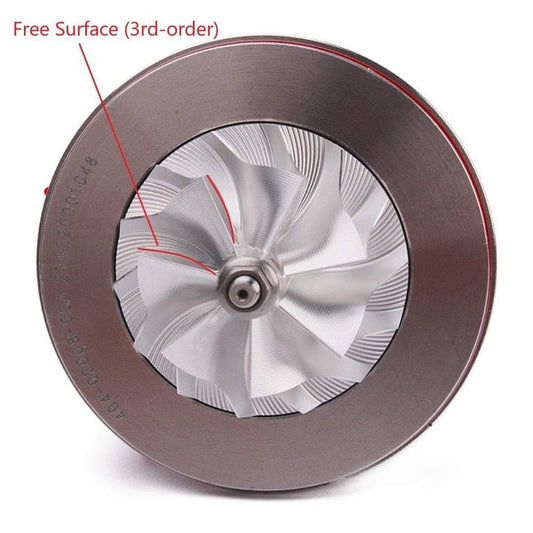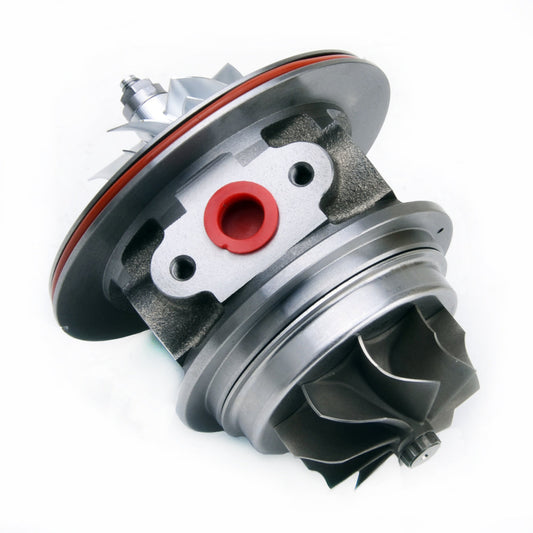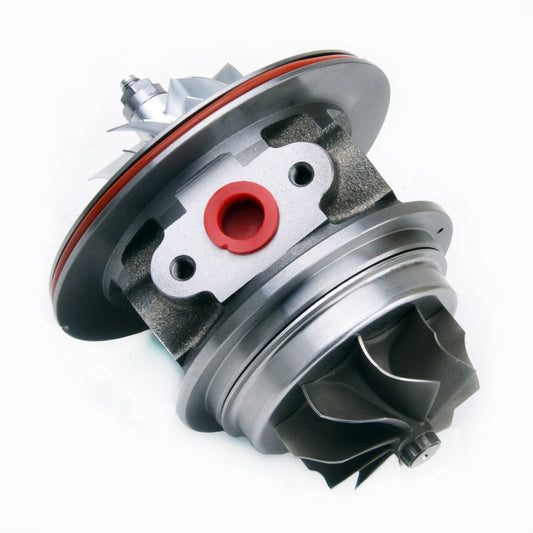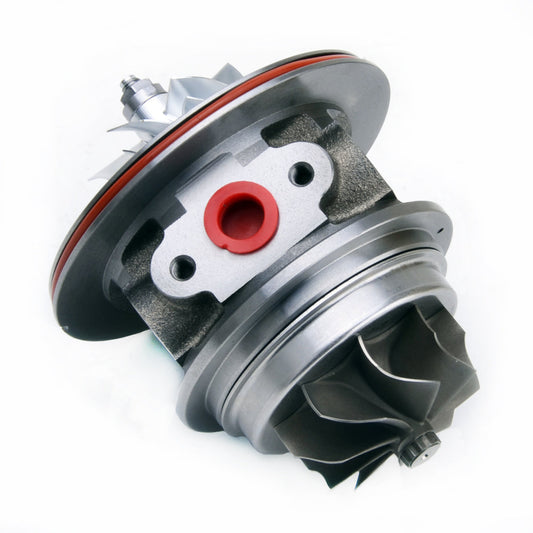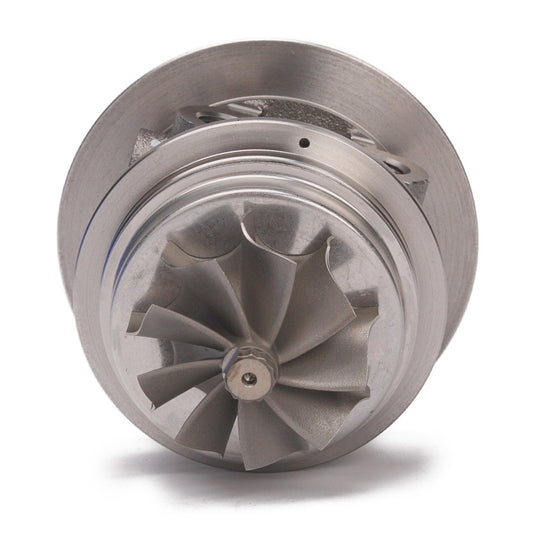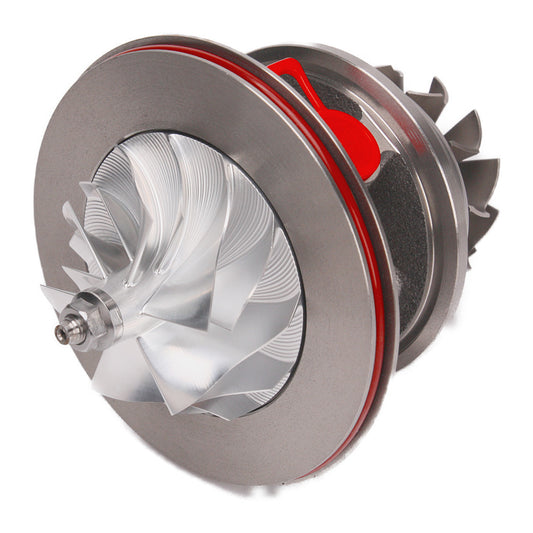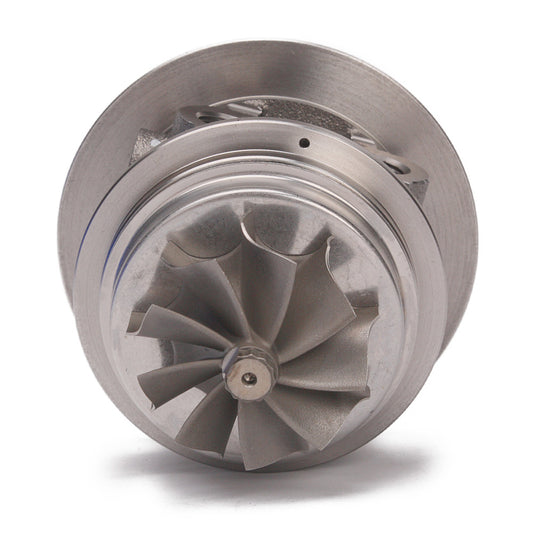Collection: Cartridges CHRA
Kinugawa Journal Bearings have been used for years in CHRA’s and have not fundamentally changed since their invention except for a couple of minor improvements including 360 degrees axial bearing vs 270-degree axial bearing and improved journal bearing design. Journal bearings consist of two different types of components; the radial bearing and the axial bearing commonly known as the “thrust” bearing. Journal bearings are typically manufactured from brass or another semi-soft material. Journal bearings depend heavily on the oil to create a dynamic fluid barrier between the turbo shaft and the bearing. This is why journal-bearing turbochargers have a small amount of radial shaft play while not in operation. Journal bearings are old technology but are reliable, cost-effective, and easily rebuildable.
Kinugawa Ball Bearing technology has only recently become prominent in the turbocharger industry due to the extreme conditions in which the turbocharger functions. Ball-bearing systems typically perform better than a comparable journal-bearing system for a few reasons. The turbocharger’s response speed (time needed to build boost) can be improved 10-15% as well as being more durable due to the improved shaft dynamics control. The increased control comes from improved design. Ball-bearing systems utilize an inner and outer race with rollers or balls between the two races. The inner race is pressed onto the turbo shaft and the outer race is pressed into the CHRA. The rollers or balls replace the oil’s “job” of controlling the turbo shaft’s orientation but do still need to be lubricated. This improved design does come at a cost though. Ball-bearing CHRA’s are 15-35% more expensive than a comparable journal bearing CHRA and are not easily rebuildable.

-
Kinugawa Turbo Ball Bearing CHRA Cartridge TD04HL-15T for Mitsubishi 6G72T 3000GT Dodge Stealth
No reviewsRegular price $829.00USDRegular priceUnit price / per$479.00USDSale price $829.00USD -
Kinugawa Turbo Ball Bearing CHRA Cartridge TD04HL-20T for Mitsubishi 6G72T 3000GT Dodge Stealth
No reviewsRegular price $829.00USDRegular priceUnit price / per$479.00USDSale price $829.00USD -
Kinugawa Turbo CHRA Cartridge TD06H-25G Oil-Cooled for Kinugawa Mitsubishi Turbo Replace Upgrade
No reviewsRegular price From $459.00USDRegular priceUnit price / per$419.00USDSale price From $459.00USD -
Kinugawa Turbo CHRA Cartridge TD06-17C Oil-Cooled for GMC Syclone Tyhoon Mitsubishi 6D31T
Regular price $459.00USDRegular priceUnit price / per$419.00USDSale price $459.00USD -
Kinugawa Turbo CHRA Cartridge TD04HL-15T for Mitsubishi 6G72T 3000GT Dodge Stealth Upgrade
Regular price From $349.00USDRegular priceUnit price / per$319.00USDSale price From $349.00USD -
Kinugawa Turbo CHRA Cartridge TD04HL-15G for Mitsubishi 6G72T 3000GT Dodge Stealth Upgrade
Regular price From $349.00USDRegular priceUnit price / per$319.00USDSale price From $349.00USD -
Kinugawa Turbo CHRA Cartridge TD04-15T for Mitsubishi 6G72T 3000GT Dodge Stealth Upgrade
Regular price From $299.00USDRegular priceUnit price / per$269.00USDSale price From $299.00USD -
Kinugawa Turbo CHRA Cartridge TD04HL-16G for Mitsubishi 6G72T 3000GT Dodge Stealth Upgrade
Regular price From $459.00USDRegular priceUnit price / per$419.00USDSale price From $459.00USD -
Kinugawa Turbo CHRA Cartridge TD04-13T for Mitsubishi 6G72T 3000GT Dodge Stealth Upgrade
Regular price From $299.00USDRegular priceUnit price / per$269.00USDSale price From $299.00USD -
Kinugawa Turbo Ball Bearing CHRA Cartridge TD05H-16K for Nissan TD42 Patrol Y60 Y61 GQ GU Water-Cooled
Regular price $919.00USDRegular priceUnit price / per$839.00USDSale price $919.00USD -
Kinugawa Turbo Ball Bearing CHRA Cartridge TD05H-20G for Nissan TD42 Patrol Y60 Y61 GQ GU Water-Cooled
Regular price $809.00USDRegular priceUnit price / per$739.00USDSale price $809.00USD -
Kinugawa Turbo Ball Bearing CHRA Cartridge TD05H-16G for Nissan TD42 Patrol Y60 Y61 GQ GU Water-Cooled
Regular price $809.00USDRegular priceUnit price / per$739.00USDSale price $809.00USD -
Kinugawa Turbo Ball Bearing CHRA Cartridge TD05H-18G for Nissan TD42 Patrol Y60 Y61 GQ GU Water-Cooled
Regular price $809.00USDRegular priceUnit price / per$739.00USDSale price $809.00USD -
Kinugawa Turbo Ball Bearing CHRA Cartridge TF06-18K for Mitsubishi 4G63T Lancer EVO 1~3 Galant VR-4 DSM Eagle
Regular price $1,029.00USDRegular priceUnit price / per$1,029.00USDSale price $1,029.00USD -
Kinugawa Turbo CHRA Cartridge TD05H-Garrett 60-1 Oil-Cooled for Kinugawa Mitsubishi Turbo Upgrade
Regular price From $459.00USDRegular priceUnit price / per$419.00USDSale price From $459.00USD -
Kinugawa Turbo Ball Bearing CHRA Cartridge TD06SL2-25G for Mitsubishi 4G63T Lancer EVO 1~3 Galant VR-4 DSM Eagle
Regular price $809.00USDRegular priceUnit price / per$739.00USDSale price $809.00USD
